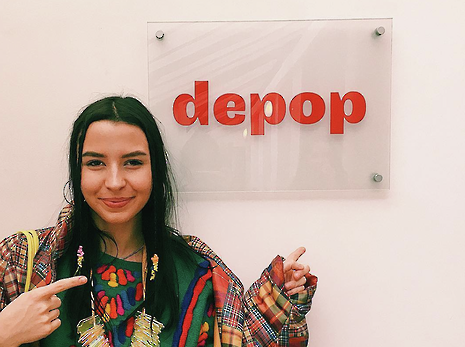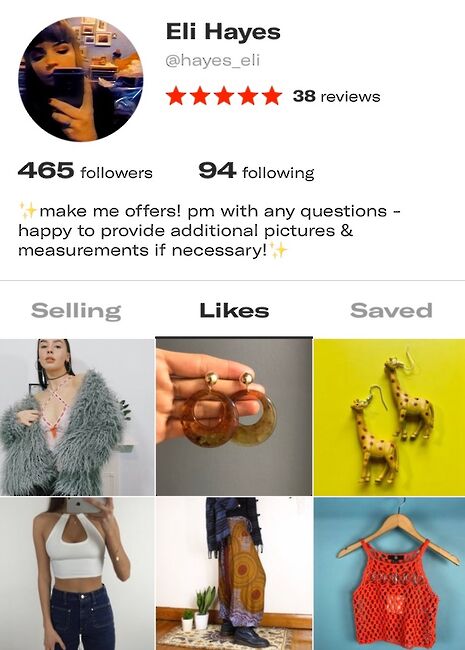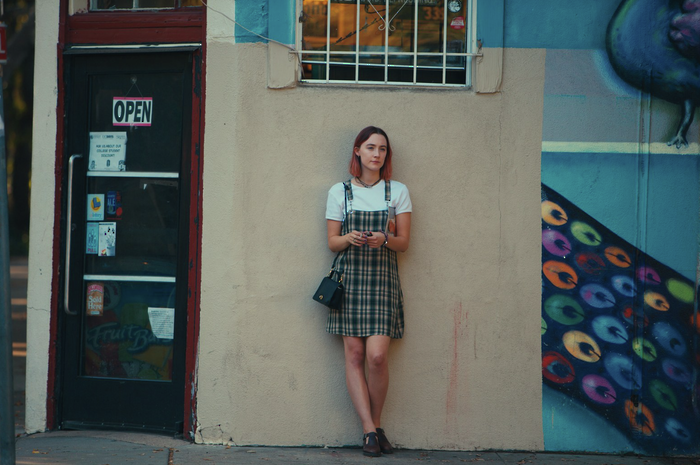The millennial app that’s changing the face of fashion
Heard of Depop? Fashion Editor Eli Hayes investigates the app’s role in the youth-driven shopping revolution taking place on smartphones and social media.

When I was ten, I would make jewellery and sell it to my family from my own pop-up shop on the hearth in my living room. Had I been born a few years later, though, my naïve hopes of profiting from my hobby might have been realised. Teen ‘moguls’ are making thousands by selling handmade and pre-owned items on Depop.
When it first launched, Depop was described as “part Instagram, part eBay”. Since 2011, the social media-come-shopping app has amassed a user base of over 8 million and caters for upwards of twenty thousand transactions per day, boasting fans in showbiz and celebdom.
Depop offers a user-friendly, community-based platform for (mostly young and mostly female) creatives to buy and sell clothes, accessories, art, and whatever else can be made to look vaguely alternative. Scrolling through my own purchase history, there are t-shirts, earrings, backpacks, and a fairly grimy second-hand Baby-G watch. Think Instagram except it’s possible to actually buy the cool things you see.
I’ve been using Depop for about as long as Maria Raga has been the company’s CEO. In that time, I’ve spent approximately £300 and Raga has doubled the company’s revenue. One of us is doing something right. But I have also noticed that throughout her reign, the nature of the app has changed. There are more interesting and unique products, sellers are becoming brands, and, perhaps consequentially, prices have risen. Last month, Raga gave a talk for the Cambridge University Start-Up Society and Cambridge Women in Business; a perfect opportunity to investigate.
Central to what Maria had to say was the creative vision of Simon Beckerman, Depop’s founder. The app was an experiment, originally; Beckerman had heard about designers creating apps instead of developers and set about having a go himself. His previous endeavours include PIG, a now defunct but once edgy Italian pop-culture magazine intended to provide a platform to young talents and creatives. Maria, who herself comes from a business background, also expressed how she had not wanted to work for large corporations, preferring the buzz and excitement of start-ups.

Intrigued by what the Depop workplace must be like, I spoke to Tainá Vilela, who Maria assured me is the brand’s resident “expert on fashion”. Vilela echoed the sentiment that Beckerman and Raga clearly share: “being creative and following your own instinct is more important than following trends”. The ethos of Depop is one of individuality and thrift: make it yourself, find it yourself, sell it yourself. But while focus is placed on the personality and aesthetic of ‘Community Leaders’ (big sellers on the app), there is deliberate encouragement of community.
Social media is relied upon by sellers and staff to widen their reach and incubate the relationships they purport to be forming. A cynic might view this attitude as further evidence of the narcissism of modern youth; even the Depop twitter encourages users to “show off”. As a user who has watched, wincing, as prices on the app rise, it is easy to understand why some might be put off by what seems to be a profitable identity parade.
But such a view necessarily rejects the fundamental purpose of Beckerman’s creation, and devalues the efforts and innovation of those who use it. Depop, like PIG before it, is designed to be a platform from which young and fresh talent can develop a brand, achieve success, and influence others. There are parts of Depop where you may find a Champion sweatshirt you could buy at Cancer Research listed for £45, but the users who are prominent and representative of the firm’s ethos are simply engaging with a world that would otherwise have been inaccessible.
In our conversation, Tainá gave me her perspective on the direction of the fashion industry: “trends are being born, spreading, and dying through social media”. Depop recognises the limited scope of high-fashion in an age where smartphones and hashtags rule. It isn’t vain to tap into the energy of the creatives using social media to share their work, it’s progressive. Fashion is changing, and Depop is not merely symptomatic of that, but responsible, too.
At a time when sustainability is the word on everybody’s lips, online ‘influencers’ are shaping popular culture, and the ethical negligence of big brands is being exposed, it is easy to see how Depop is thriving. Having just received a $20 million investment to fund expansion in the US, it looks like the app has a lot left to give. Millennials (or as Beckerman calls them, “people who like to be independent, creative, and free”) are the driving force. Depop sits at the intersection of fast- and slow-fashion and provides a space for young imaginations to flourish. Long live the shopping revolution
 News / Caius mourns its tree-mendous loss23 December 2025
News / Caius mourns its tree-mendous loss23 December 2025 Comment / Yes, I’m brown – but I have more important things to say22 December 2025
Comment / Yes, I’m brown – but I have more important things to say22 December 2025 News / Clare Hall spent over £500k opposing busway 24 December 2025
News / Clare Hall spent over £500k opposing busway 24 December 2025 Interviews / Politics, your own way: Tilly Middlehurst on speaking out21 December 2025
Interviews / Politics, your own way: Tilly Middlehurst on speaking out21 December 2025 News / King appoints Peterhouse chaplain to Westminster Abbey22 December 2025
News / King appoints Peterhouse chaplain to Westminster Abbey22 December 2025









